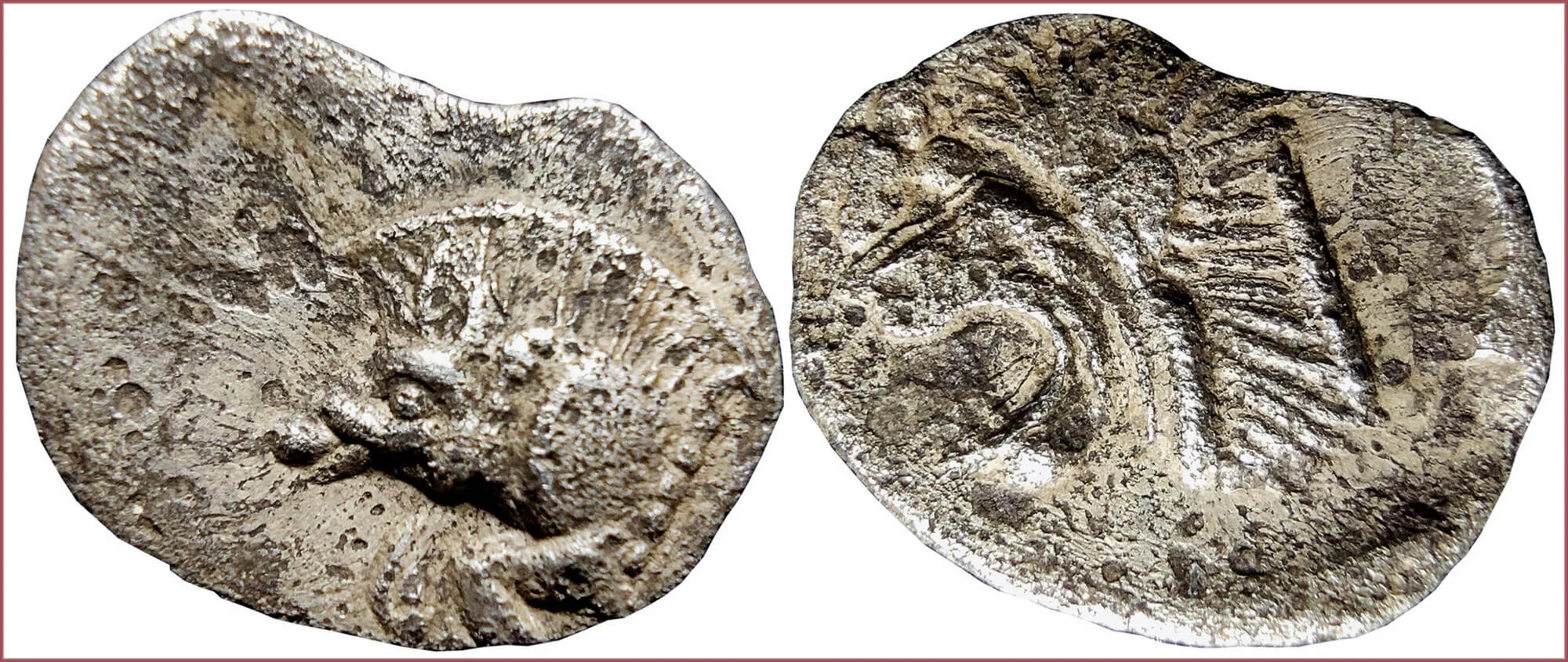HEMIOBOL: COIN OF CYZICUS (KYZIKOS)
Hemiobol, 480-400 BC: Cyzicus (Ancient Greece)
Cyzicus (also Kyzikos) — an ancient Greek town in Mysia in Anatolia in the current Balıkesir Province of Türkiye.
Protome (a type of adornment that takes the form of the head and upper torso of either a human or an animal) of wild boar. Behind — a lost image of a fish (manufacturing defect on this particular coin: the image did not fit on the workpiece).
The head of an aggressive lion with a wide open mouth (roaring lion).
Coins of a similar design of the same period of a slightly different weight (twice and three times higher) are also known: obol and trihemiobol.
- Silver: 10 mm - 0.38 g
- Reference price: 18$
COIN HEMIOBOL — WHERE & WHEN (coins catalog: by names & emitents)
- ANCIENT GREECE, many issuers (6th-1th centuries BC): hemiobol = 1/2 obol = 1/12 drachm
- ANCIENT INDIA, Indo-Greek kingdom + Indo-Scythian Kingdom (2th-1th centuries BC): hemiobol = 1/2 obol = 1/3 trihemiobol
- ANCIENT ROME, Roman provinces (1th-3th centuries AD): hemiobol
HEMIOBOL as coin name.
The name of the hemiobol coin is literally translated from Greek as "half of an obol" (from the Ancient Greek prefix "ἡμι" [hēmi] — "half" and the name of a common ancient Greek coin — "obol").
Hemiobol is mostly known as an ancient Greek small silver coin. Usually, it was equal to 1/2 obol, 1/12 drachm or 1 copper tetrachalkon (sometimes different cities of Ancient Greece used other ratios).
The first hemiobols date back to the 6th century BC, which puts them in the same row as the oldest coins on the planet. They appeared almost simultaneously with obols (we are talking about a coin, not a unit of weight).
Initially, it was an extremely small silver coin (the average weight was approximately between 0.25 and 0.5 grams). Later, copper/bronze hemiobols of significantly higher weight were appeared.
The typical plot did not differ from the images on other Greek coins of that time: mythical creatures, gods and goddesses of Ancient Greece, animals...
The hemiobols of the following state formations of the south of the Balkan Peninsula and remote Greek settlements are distinguished: Argolis, Arcadia, Attica, Bactria, Boeotia, Aegina, Aeolis, Aetolia, Calabria, Caria, Colophon, Elis, Epirus, Ionia, Lesbos, Lydia, Macedonia, Mysia...
Almost all hemiobols that listed in numismatic catalogs date from the historical period before the beginning of Common Era.






